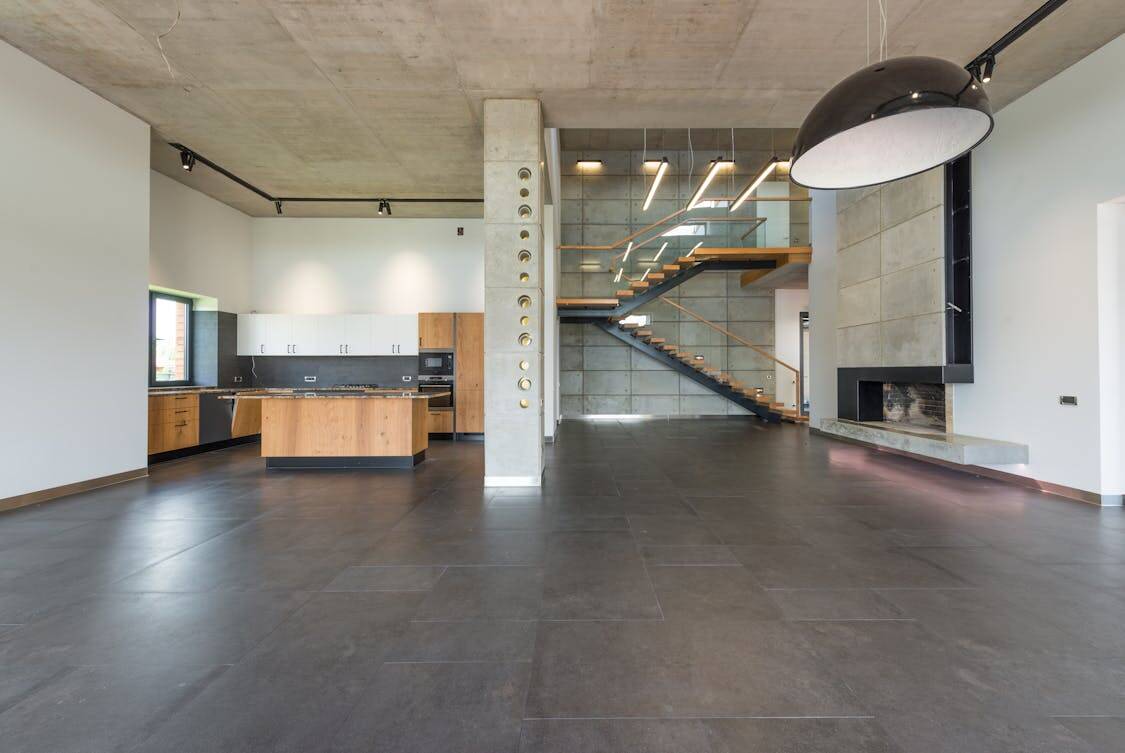Epoxy flooring has gained popularity in recent years, becoming a desirable choice for many homeowners. Yet, with any flooring option, it’s essential to weigh the pros and cons.
This article seeks to unpack the specifics of epoxy flooring, helping you to make an informed decision for your home.
What is Epoxy Flooring?
Epoxy flooring consists of a durable resin that binds together two components: an epoxy resin and a hardener. When combined, these materials undergo a chemical reaction that creates a strong, adhesive surface.
Often utilized in commercial spaces, epoxy flooring is finding its way into residential properties as well, thanks to its impressive characteristics.
Benefits of Epoxy Flooring
Durability
One standout feature of epoxy flooring is its remarkable durability. Once cured, it can handle heavy foot traffic and resist wear and tear. This is particularly useful in high-traffic areas, such as kitchens and garages.
Homeowners appreciate that they can rely on epoxy to withstand daily activities without showing significant signs of damage.
Easy Maintenance
Keeping epoxy floors clean can be a breeze. The seamless surface minimizes dirt buildup, making it easy to sweep and mop. Spills can be wiped up quickly, reducing the risk of stains. For busy households, this low-maintenance quality is a big win.
Aesthetic Appeal
Epoxy flooring comes in a variety of colors and finishes. Homeowners can choose from glossy, matte, or even textured surfaces.
The ability to customize the look means that it can fit various design styles, from modern to rustic. This aesthetic flexibility allows for creative expressions in interior design.
Cost-Effectiveness
While the initial installation costs of epoxy flooring may be higher than some other options, its long lifespan contributes to cost-effectiveness over time.
With proper care, epoxy flooring can last for decades, saving you from regular replacements or repairs. This longevity can make it a smart investment for your home.
Drawbacks of Epoxy Flooring
Installation Challenges
While DIY enthusiasts might be tempted to take on epoxy flooring installation, it’s often best left to professionals. The application process can be tricky, requiring precise mixing and timing.
If not done correctly, the results can be less than satisfactory. For a flawless finish, hiring a qualified installer may be the way to go.
Temperature Sensitivity
Epoxy flooring can be sensitive to temperature changes. Extreme heat or cold can affect the flooring’s performance. Homeowners should consider the climate in their area, especially if they live in regions with fluctuating temperatures.
Proper installation techniques can help mitigate some of these issues.
Slipperiness
When wet, epoxy floors can become slippery. This can pose a safety hazard, particularly in areas like kitchens and bathrooms.
To combat this, some manufacturers offer non-slip additives that can be mixed into the epoxy. This can enhance safety without compromising aesthetics.
Perfect Applications for Epoxy Flooring
Garages

Garages are perhaps the most common place where epoxy flooring shines. It can handle the weight of vehicles and resist oil stains, making it ideal for this environment.
Many homeowners appreciate the ease of cleaning a garage with epoxy floors, turning a cluttered space into a functional area. If you’re searching for durable, low‑maintenance garage floor options, epoxy is a top contender that delivers both strength and simplicity.
Basements
Basements often face moisture issues, but epoxy flooring can provide a solution. Its impervious nature prevents water from seeping in, offering a protective barrier against potential flooding.
This quality makes it an excellent choice for finishing basements into livable spaces.
Kitchens
With significant foot traffic and spill potential, kitchens benefit from epoxy flooring. Its stain resistance and easy maintenance make it a practical option for families who spend a lot of time in this area.
The variety of colors allows homeowners to match their kitchen aesthetics effortlessly.
Commercial Spaces
While the focus is on homes, it’s worth noting that many commercial spaces utilize epoxy flooring for its durability and ease of cleaning. Restaurants, retail stores, and warehouses often turn to this flooring type to maintain a professional appearance without sacrificing functionality.
What to Consider Before Installation
Subfloor Condition
Before opting for epoxy flooring, assess the condition of the subfloor. Cracks or uneven areas need to be addressed beforehand.
Proper preparation can significantly impact the longevity of the epoxy surface. Ensuring a solid base will lead to a smoother installation and better performance.
Environmental Factors
Consideration of the installation environment is vital. Excessive humidity or moisture can interfere with the curing process.
To ensure optimal results, it’s best to install epoxy flooring during periods of stable weather conditions. This foresight can make a difference in the finished product.
Aesthetic Integration
As mentioned earlier, epoxy comes in various colors and designs. Think about how the flooring will integrate with the overall design of your home.
A well-chosen epoxy floor can enhance your space, while a poor choice might clash. Take the time to visualize how it will fit into your existing decor.
Maintenance Tips for Longevity
Regular Cleaning
To keep your epoxy floors looking fresh, a regular cleaning routine is essential. Sweeping daily or weekly can prevent dirt buildup, while mopping with a gentle cleanser will help maintain its shine.
Avoid abrasive cleaners, as these can scratch the surface and diminish its integrity.
Immediate Spill Management
Quickly addressing spills is key to preserving epoxy flooring. Wipe up liquids as soon as they occur to prevent potential staining. For tougher stains, a mixture of warm water and mild detergent can be effective.
Keeping the surface clean will prolong its lifespan and maintain its aesthetic appeal.
Periodic Inspections
Conduct routine inspections of the flooring for any signs of damage or wear. Catching small issues early can save time and expense in the long run.
If you notice any fading or surface imperfections, consulting a professional can guide you on the best course of action.









